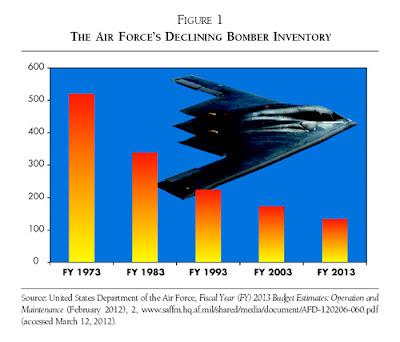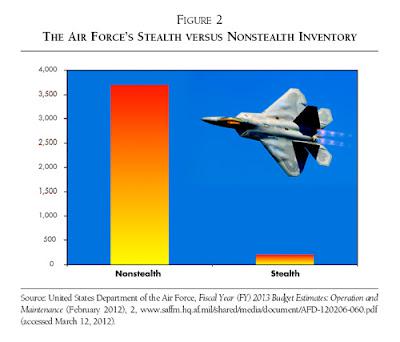Since the “seiken kohtai” (power rotation) in 2009, policymakers on both sides of the Pacific are obsessed with the Okinawa base issue, which has obscured the most critical issue of the US-Japanese alliance. That is the validity of Obama strategy. In the words of a Japanese journalist Tsuyoshi Sunohara, Yukio Hatoyama was so exultant with the success of overthrowing the rule by the Liberal Democratic Party (LDP) since 1955 that he failed to understand fatal consequences of his remark to revise the bilateral agreement on Okinawa. In the name of resetting postwar Japanese politics, Yukio Hatoyama insisted on cutting US troops in Okinawa by canceling the Futemma deal, which was signed with the United States through long and laborious negotiations. Later, Hatoyama admitted strategic importance of Okinawa to say “The further I learn, the better I understand the real meaning of deterrence [provided by US military presence to defend Japan].” However, it is no use crying over spilt milk. Now, Japan must heal this damage to restore trust by the United States. Current Japanese government is hardly in a position to exert influence on foreign policy making in Washington, and discuss the big picture of regional and global security partnership beyond the Okinawa base issue and the Senkaku territorial dispute.
I would like to mention one episode that implies this. Shortly after the historical victory of the Democratic Party of Japan (DPJ), I had an opportunity to attend a meeting of diplomats and businessmen from both Japan and the United States. The primary focus of that session was Nagatacho politics under the DPJ government. Futemma was one of main topics. I was struck to hear American participants say “It seems that newly elected DPJ administration faces some difficulties in handling US-Japanese relations, but things were utterly up to the Japanese side, and there were no problems with the American side. If the agreement fails, American forces just continue to stay in Futemma.” Almost all the attendants agreed to this viewpoint. The key point for me is its psychological effect on the US-Japanese alliance, rather than technical details of Okinawa. Implicitly, they said, “Whatever happens between both countries, Japan is responsible for everything, and America has nothing to be blamed.” In other words, Japan has lost eligibility to say something to America, even if Washington’s strategy is utterly wrong. Prime Minister Yoshihiko Noda may have begun to move toward improving US-Japanese relations on his April 30th visit to the White House, but the scar of Hatoyama’s mishandling is much deeper than commonly expected. To my regret, I failed to mention concerns on the American side, as the discussion focused on the storm in a teacup of Nagatacho politics.
Let me talk about fatal frauds of the Obama strategy, which will ruin alliances with any major partners of Europe, the Middle East, and Asia, including Japan. The fundamental assumption of such worldwide alliances is the superpower position of the United States. However, since the inauguration, President Barack Obama expresses his willingness to commit a “superpower suicide”. His apologist attitude in the Prague and the Cairo speeches was bitterly criticized. While many Japanese policymakers express “gratitude” to the pivot to Asia despite budget constraints, the reality of this strategy is hollow. The Middle East still needs American military presence. Also, quite ironically, the pivot to Asia does not necessarily increase US military power in the Asia pacific region. Despite emphasis on air sea battle, American naval and sea power has been downsized substantially in Obama’s plan. The horrible delay to develop F-35 joint strike fighter is a typical case.
McKenzie Eaglen, Resident Fellow at the American Enterprise Institute, presents critical analysis on the pivot to Asia. Under Obama’s plan, military personnel will be reduced dramatically, and 100,000 soldiers of the army and the Marine Corps will be laid off. That goes beyond correcting “overstretch” during long wars in Iraq and Afghanistan. In addition, procurement and research are cut on all services of the armed forces. The navy and the air force are hit much harder. It is not just the size of both services but research and development have been sacrificed more seriously. Although investment in anti-access and area denial capability is the key to maintain US preeminence against China, the Obama administration cuts this. Furthermore, Eaglen argues that the air force is the biggest victim of Obama’s defense plan. It buys fewer aircrafts than the army and the navy next year. More critically, expenditures on cutting the edge technology such as stealth fighter/bombers and unmanned aircrafts are curtailed (“Obama's shift to Asia budget is a hollow shell game”; AOL Defense; March 15, 2012). It is utterly contradictory that Obama’s “shift to Asia” is making America strategically vulnerable to China, and not to mention to Middle East threats, notably Iran and terrorists.
While Obama stresses that US forces be upgraded in software rather than hardware, we must remember the farewell speech by Former Secretary of Defense Robert Gates. The size of armed forces must be sufficient to achieve national security goals. In discussing this, I would like to mention some failures of Britain’s Strategic Defence and Security Review in 2010. The Cameron administration placed emphasis on software rather than hardware to redesign British defense plan under fiscal austerity. What is the consequence? In the war in Libya, Britain’s combat performance was not sufficiently well. The 30th anniversary of the Falkland War this year provokes nationalism in Argentina, and it is tough for downsized British forces to manage this challenge confidently. The Obama administration makes the same and “friendly” mistakes with the British counterpart.
From the above aspects, I would like to discuss contradictions in the Obama strategy furthermore. Applying statistical data of the Department of Defense, Eaglen argues about fundamental weaknesses of the Obama strategy in a joint article with Douglas Birkey, Director for Government Relations at the Air Force Association (“Nearing coffin corner: US air power on the edge”; AEI National Security Outlook; March 2012). The key point is, “Allies’ commitment to the United States and its interests depends directly on their perceptions regarding American presence, staying power, and resolve.” Drastic cuts in air power lowers American presence substantially. Quoting 2010 Quadrennial Defense Review, both authors argue that the Unites States “increase in investment in long-range strike systems and their associated sensors. In addition, U.S. forces must develop and demonstrate the ability to operate in an information-denied environment” to deal with growing Chinese threats. Strategic bombers and anti-A2/AD capabilities are key issues to strengthen air sea battle power both in terms of quality and quantity. Let me talk about long range bombers first. As shown in the table below, bomber inventory has dropped from 500 during the Viet Nam War to 134 today.
Though modern technology enables individual bomber to attack multiple targets, each airplane cannot be in two places simultaneously, which makes it impossible to conduct parallel concurrent attacks. NATO experience in Libya suggests that extensive strikes with cruise missiles are too costly to sustain. Considering such insufficiency of long range attack capability, Ichiro Ozawa, Member of the House of Representatives, is utterly wrong to say that all US forces must be relocated outside Japan such as Guam, except the 7th fleet. Also, forward base bombers can fly more sorties than those in rear base. Okinawa has its own role, and so does Guam. The same logic can be applied to Iran. Forward bases in the Gulf have their own roles, and so does Diego Garcia. A sword is used as a sword, and a long lance is used as a long lance.
Successful long range strike needs to be combined with tactical air raid from forward bases. Therefore fighter jets must be modernized and increased. This is a critical problem particularly upgrading anti-A2/AD capabilities. While China is developing 5th generation A2/AD platforms such as J-20 stealth fighters and advanced anti-ship missiles, the United States possesses only 185 F-22 fighters and B-2 bombers. As indicated in the table below, US air force needs further modernization.
Eaglen and Birkey insist “Policymakers’ investment priorities should focus on the next-generation bomber; F-35, KC-46, and F-22 modernization; acquiring long-range, low-observable, carrier-based strike and air dominance platforms; and joint electronic warfare capabilities.” They conclude that resources must match the reality, but there are any contradictions in the Obama administration’s strategy of pivot to Asia and emphasis on air sea battle.
As I discuss in this post, American policymaking is not necessarily perfect. However, the scar of Hatoyama diplomacy is so deep that any kind of mistakes on the American side are obscured. This is largely because unconscious mindset of “Japanese inconsistency worsens bilateral relations, but there is nothing to be blamed on the American side” dominates current atmosphere between both countries. As the Futemma problem has eroded Japan’s position, it is hardly in a position to say “no” to America even if incumbent administration at the White House adopts a wrong policy. Those who were at the meeting were deeply involved in Japanese political corridor, and they showed understanding, patience, and respect to Japan, despite Hatoyama. However, quite a few key policymakers in Washington are experts on Europe and the Middle East, and they may not be so generous to Japan. Prime Minister Yoshihiko Noda must tackle such dreadful legacy of Hatoyama. The opposition parties have their own advantages. While the ruling party s preoccupied with tasks at hand, they can spend much energy to reconstruct the alliance from long-term and fundamental viewpoints, in order to prevent any step toward superpower suicide and the rise of isolationist mindset in the United States. “Immaturity” of DPJ is too well-known among the Japanese public. The opposition parties must act beyond the storm in a teacup ob Nagatacho.
Debate Magazine
The Scar by Hatoyama on the US-Japanese Alliance Is Deeper Than Expected
Posted on the 21 May 2012 by ShahalexanderAuthor's Latest Articles
-
Harris Loss and Leadership for National Unity
-
Should the LDP Leader Election Sacrifice Japan’s UN Diplomacy?
-
How Well Did Foreign Secretary Cameron Act the Role of Churchill to Move America for Defending Ukraine?
-
A Question About Former US Ambassador to Japan Hagerty’s Interview

